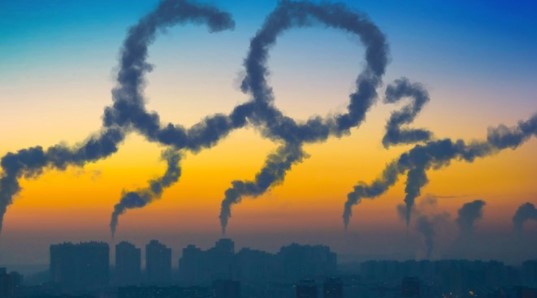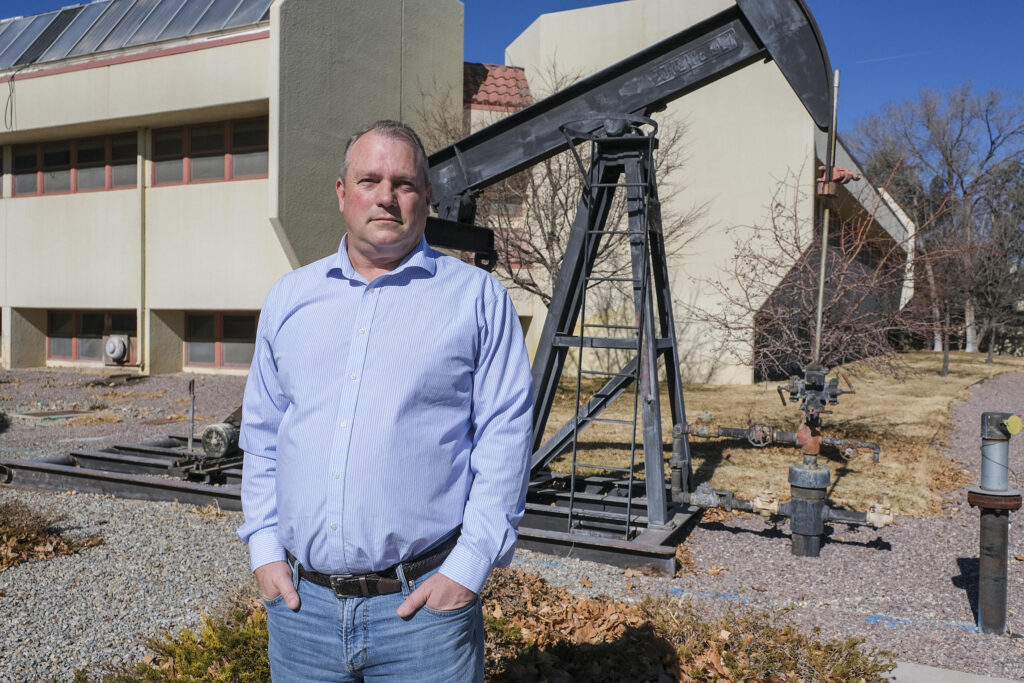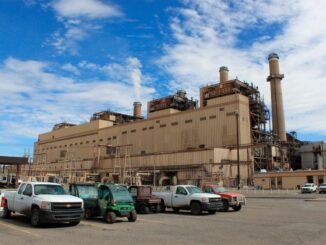

Director Robert Balch is seen at the New Mexico Tech Petroleum Recovery Research Center . Photographed on Monday January 24, 2022
The inherent dangers of capturing and transporting carbon dioxide for industrial operations exploded into the public domain two years ago when a CO2 pipeline suddenly ruptured in the tiny Mississippi town of Satartia.
The pipeline burst open in the early evening of Feb. 22, 2020, releasing a plume of carbon dioxide that within minutes engulfed Satartia and surrounding areas. It sickened scores of residents, sending 49 people to hospitals and forcing the evacuation of at least 250 others.
The Huffington Post published an extensive report on the incident last September, which the Virginia-based Climate Investigations Center produced after a 19-month investigation.
During the event, people collapsed in their homes and vehicles, according to the report. Others wandered around dazed, nauseated and gasping for air.
“Even months later, the town’s residents reported mental fogginess, lung dysfunction, chronic fatigue and stomach disorders,” wrote Dan Zegart, CIC senior investigator and report author.
The incident highlights the potential risks many more U.S. communities could face if carbon capture and sequestration technology is widely deployed, Zegart told the Journal in a recent interview. To manage the billions of tons of CO2 that industry and federal policy makers hope to trap over time from industrial operations across the nation, a new, continent-wide network of CO2 pipelines is needed to transport captured carbon to special locations equipped for permanent storage in deep, underground geologic formations.
The federal government is now contemplating exactly that, with billions of dollars already earmarked for pipeline construction around the country in President Joe Biden’s new Infrastructure Investment and Jobs Act, approved last fall, and more proposed in other bills now pending in Congress.
A Princeton University study, published in December 2020 and funded in part by the oil industry, calls for a 65,000-mile system by 2050, up from just 5,000 miles of CO2 pipelines currently operating in the U.S. And even at that level, the new system could only transport about 15% of today’s U.S. greenhouse gas emissions, according to the CIC.
Maps from the Princeton study — plus others published by the U.S. Department of Energy’s Carbon Capture Program at the National Energy Technology Laboratory, and by the Minnesota-based Great Plains Institute — show a vast network of potential pipelines stretching from coast to coast, Zegart said. It includes huge trunk lines spanning nearly every state, including New Mexico, plus a system of spur lines protruding into local communities.
The sheer cost of building the network alongside CCS deployment could reach trillions of dollars, especially given the special requirements to make CO2 pipelines safe, Zegart said.
CO2 is highly corrosive, particularly if contaminated by water, requiring robust pipeline structures to contain it and careful monitoring of gas purity.
To transport it, the carbon is compressed into a liquid state and then pumped through pipelines under high pressure. And the tubing is much wider in diameter than typical gas pipelines, with compressors needed all along the system to keep the CO2 in a liquid state.
CO2 behaves differently from natural gas in a pipeline, making a rupture particularly dangerous, according to a report on CCS and pipelines from the Center for International Environmental Law, or CIEL, which was cited in the CIC report on the Satartia incident.
“Because of the intense pressures involved, explosive decompression of a CO2 pipeline releases more gas, more quickly, than an equivalent explosion in a gas pipeline,” said the CIEL report. “Even a modest rupture can spread freezing CO2 over a wide area within seconds.”
CCS supporters say pipeline operators have decades of experience safely managing CO2 networks through enhanced oil recovery, or EOR, operations, whereby producers inject CO2 into aging oil wells to create pressure to push more crude to the surface, while leaving the CO2 sequestered underground.
New Mexico producers in the Permian Basin have been managing those systems for decades, operating hundreds of miles of local CO2 pipelines, said Bob Balch, director of the Petroleum Recovery Research Center at the New Mexico Institute for Mining and Technology in Socorro.
Notwithstanding the Satartia incident, very few accidents have occurred over the years, he added.
“We understand carbon transport well, because we’ve been doing it for decades,” Balch told the Journal. “If there were any major risks with the pipelines, we’d know it already.”
Still, industry and government officials will need substantial buy-in from local communities before building new CO2 pipeline networks, Zegart said. And local officials will need to review and possibly upgrade monitoring and safety regulations.
“No one is really talking about the CCS pipeline issues, but transporting the CO2 is really the fly in the ointment,” Zegart said. “It requires a huge network that’s much more expensive to build than other pipelines, and it will go through many highly populated areas across the country. Getting public buy-in may be the biggest problem.”



